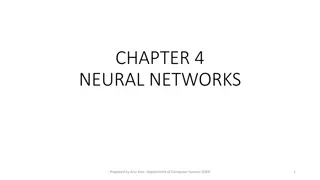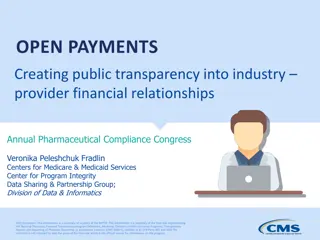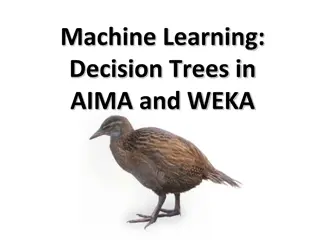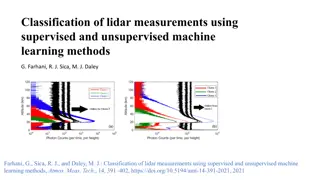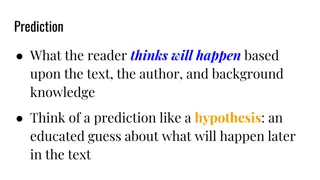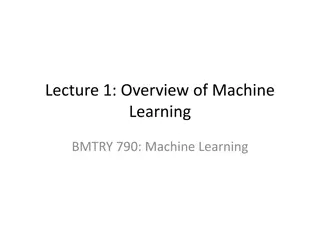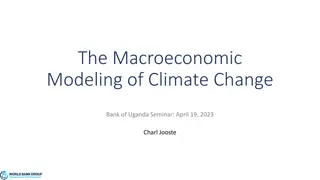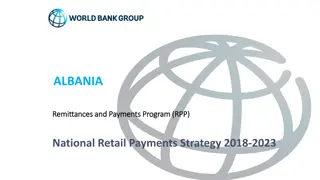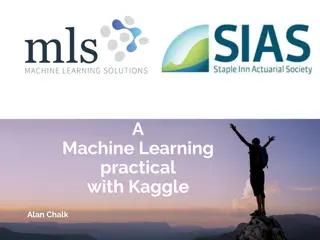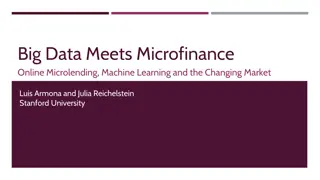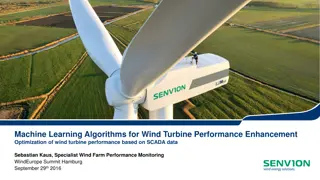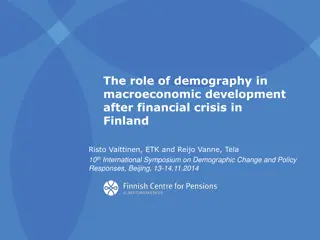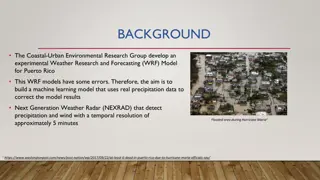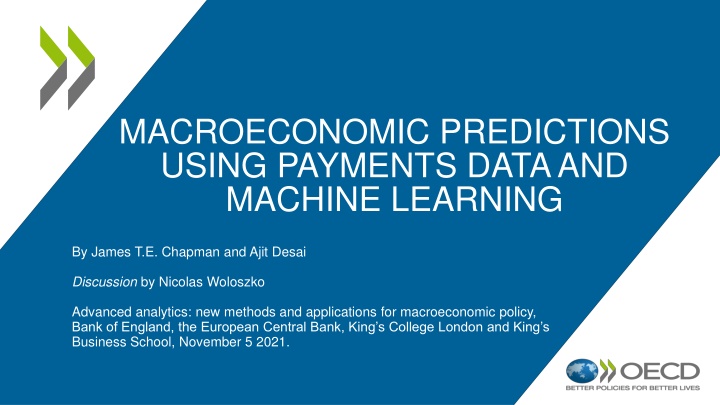
Macroeconomic Predictions Using Payments Data and Machine Learning
Very interesting nowcasting exercise utilizing new data sources for forecasting Canadian GDP and retail sales. The study compares various machine learning models, highlighting the effectiveness of Gradient Boosting. The paper delves into the intersection of machine learning and macroeconomics, discussing the evolution and challenges in the field, particularly focusing on interpretability, structural change, concept drift, and model evaluation.
Download Presentation

Please find below an Image/Link to download the presentation.
The content on the website is provided AS IS for your information and personal use only. It may not be sold, licensed, or shared on other websites without obtaining consent from the author. If you encounter any issues during the download, it is possible that the publisher has removed the file from their server.
You are allowed to download the files provided on this website for personal or commercial use, subject to the condition that they are used lawfully. All files are the property of their respective owners.
The content on the website is provided AS IS for your information and personal use only. It may not be sold, licensed, or shared on other websites without obtaining consent from the author.
E N D
Presentation Transcript
MACROECONOMIC PREDICTIONS USING PAYMENTS DATA AND MACHINE LEARNING By James T.E. Chapman and Ajit Desai Discussion by Nicolas Woloszko Advanced analytics: new methods and applications for macroeconomic policy, Bank of England, the European Central Bank, King s College London and King s Business School, November 5 2021.
A very interesting nowcasting exercise using a new source of data: payment data The paper introduces a forecast of Canadian GDP and retail sales using payment data as well as traditional indicators It runs a horse race of various ML models, an OLS and a DFM based on evaluation on a hold-out sample of 2 years of monthly observations(2019-2020) The model using Gradient Boosting wins the horserace. The parameters are optimised using grid search and k-fold cross-validation. The forecast works well for M+1 and M+2 (backcasting) It uses SHAP to derive feature contributions and identify the main features.
ML at the frontier of macro ML has been at the frontier of macro for at least 11 years now (eg Biau and D Elia 2010) [it s older than eg the synthetic control method (Abadie Gardeazabal 2003) !] The literature has covered quite some ground: Whether ML can be used in macro (eg Biau and D Elia 2010, Tiffin, 2016) Horse races based on off-the-shelf supervised algorithms (also with a pedagogical aim to introduce new tools in macro, eg Joseph 2017, Jung, Patnam and Ter-Martirosyan 2018) Why ML can work, what elements are specifically useful (eg Goulet Coulombe 2020[a], Bontempi 2017) The limits of supervised ML in macro, and improvemens on existing algorithms in order to better address the specific challenges in macro (eg Goulet Coulombe 2020 [b], Woloszko 2017, Joseph 2019) The literature takes a new turn: high-frequency data.
Macro at the frontier of ML Macro forecasters using ML face a number of questions at the frontier of research in ML: How to address concept drift (structural change) Asynchronous frequencies, the ragged edge problem ML for tabular data (XGBoost, Light GBM or deep learning) There are still a number of research questions about interpretability What are the insights we can derive from using interpretability ? About the model, about the economy ? How certain are these insights (inference, Joseph 2020) Differential interpretability (eg different explanations derived from different models in the horse race, see Joseph 2020) How to group variables in meaningful concepts (Renard, Woloszko, Aigrain, Detyniecki, 2019) Another important research topic is model evaluation
Forecast simulations are constrained by the data reuse problem Data re-use: Forecast simulations aim at estimating model performance based on a sample of observations (= the validation set) Research in forecasting is an adaptive process whereby researchers select a model, evaluate its performance using forecast simulation on a given validation set, and iterate based on previous results Data reuse = using the same validation set for developing and evaluating the model. Data reuse can cause over-fitting the validation set Overfitting the training set = the in-sample performance diverges from the out-of-sample performance Over-fitting the validation set = the out-of-sample performance diverges from the general performance (over the underlying data distribution) Also know as model selection bias: The best model, which is selected ex post, is more likely to fit the noise in the validation data Forecast simulations provide spurrious performance estimates which may lead to false discoveries by selecting models based on luck rather than skills (White, 2000). Model selection bias is a bigger concern when: The validation set is small (here, N=24), or when the gist of the variance is driven by one given event The number of hyperparameters is large
How to evaluate a forecasting algorithm ? 1. Design of validation set Time window Countries Eg Goulet Coulombe et al. 2020: Target variables Time horizons 38 years, 10 key monthly macroeconomic indicators, 6 horizons 2. Choice of benchmarks OLS is not a good benchmark Autoregressive models are good when forecasting time series with persistence (as predicting ?? = ?? 1can often give a good RMSE) State-of-the-art DFMs or existing forecasts ? Not so easy to replicate a good DFM Existing forecasts rarely publish their vintages they should ! 3. Publishing historic forecasts should become a standard in our community This is a gold standard, and the equivalent of pre-registering research design in causal studies It s made easy by widely used tools: pushing projections on GitHub every month, possibly using GitHub actions for automated ML.

